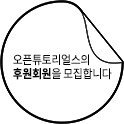원문
For his sins Pinocchio is not only hanged but robbed, kidnapped, stabbed, whipped, starved, jailed, punched in the head, and has his legs burned off. Worse, however, is the psychological abuse. At different points he is tricked into believing that he has killed both his “father” (Geppetto) and his “mother” (the Blue Fairy). Collodi savors Pinocchio’s comeuppances, recounting each one in loving, histrionic detail. When Pinocchio is caught in an iron trap he is “so giddy with pain that stars of every colour danced before his eyes.” During one of his several bouts of starvation, Pinocchio’s stomach is “like an apartment that had been left empty and uninhabited for five months.”
Other elaborate humiliations include being plunged in flour “five or six times” until “he was white from head to foot and looked like a puppet made of plaster” in preparation for being cooked in a frying pan. He is strapped with a “great collar covered in brass knobs” like a dog and locked in a kennel. And, after being transformed into a donkey, he is dressed up like a girl and forced to do absurd dances, then leap through hoops, on stage. Collodi’s sadistic glee in these scenes is infectious—they are by far the richest and most entertaining sections of the book. In this way Pinocchio resembles not the fairy tales of, say, Hans Christian Anderson, in which good things happen to good children, but Heinrich Hoffmann’s Struwelpeter and Hillaire Belloc’s Cautionary Verses, in which bad things happen to bad children. Collodi, however, doesn’t have the light touch of Hoffmann and Belloc; he is sterner, and more malicious.
Not even Pinocchio’s dullest young reader will fail to miss Collodi’s message, since he rephrases it in one way or another in nearly every chapter. As the Blue Fairy puts it in the book’s conclusion:
Boys who minister tenderly to their parents and assist them in their misery and infirmities, are deserving of great praise and affection, even if they cannot be cited as examples of obedience and good behaviour. Try and do better in the future and you will be happy.
나솔
피노키오는 자기가 저지른 죄에 대해서 목 매달리기만 한 게 아니다. 피노키오는 강도를 당하고 유괴당하고 칼에 찔리며, 채찍에 맞고 굶고, 감옥에 갇히며, 머리에 구멍이 뚤린다. 또한 다리가 불에 타기까지 한다. 이게 전부가 아니다. 더욱 심하게 작가는 피노키오를 심리적으로 학대한다. 여러 지점에서 작가는 피노키오를 속여서 자긴이 아빠 게뻬또와 엄마 파란머리 요정을 죽였다고 믿게 만든다. 콜로디는 피노키오가 벌을 받는 과정을 사랑스럽고 과장된 세부묘사에서 하나하나 다루면서 피노키오가 마땅한 벌을 받는 것을 만끽한다. 피노키오가 철망 덫에 걸렸을 때, 피노키오는 고통 때문에 아찔해져서 눈앞에 오색별들이 보였다고 묘사하고 있다. 또한 피노키오가 굶었을 때에는 피노키오의 배가 마치 "다섯 달 동안 방치해둔 아파트와도 같다"고 묘사하고 있다.
작가는 공을 들여서 피노키오에게 창피를 주는데, 예를 들면 후라이팬에 굽기 전에 plaster로 만든 인형처럼 하얗게 보이도록 밀가루에 5-6번이다 거꾸러뜨리는 장면이 나온다. 피노키오는 놋쇠 손잡이가 달린 큰 개목걸이에 묶여서 마치 개처럼 개집에 갇힌다. 그 뒤에 피노키오는 당나귀로 변하는데, 여자처럼 옷을 입고 우스꽝스러운 춤을 주도록 강요받는다. 그리고 훌라후프 사이로 뛰는 등 무대에서 묘기를 하라고 강요받는다. 이런 장면에서 작가가 사디스트적으로 고소해하는 것은 독자에게 전염이 된다. 이 부분은 이 책에서 단연코 가장 풍부하고 가장 재미있는 부분이다. 이런 점을 보면 피노키오는 착한 아이들이 복을 받는 안데르센류의 동화보다는 호프만의 Struwelpeter(더벅머리 피터, Shaggy Peter)나 벨록의 경고성의 운문과 더욱 닮았다. 후자의 작품에서는 나쁜 일을 한 아이들에게 나쁜 일이 생긴다. 호프만과 벨록이 약간 가볍게 다루는 반면에 콜로디는 근엄하고 적의가 느껴질 정도로 다룬다.
아주 어린 독자들도 콜로디가 하려는 말이 무엇인지 쉽게 눈치챌 것이다. 왜냐하면 매장마다 작가가 전하려는 메세지가 표현만 바꾸어서 나오기 때문이다. 작가가 전하려는 메세지는 이것이다.
"부모님께 순순하게 대하고, 부모님이 어렵거나 편찮으실때 옆에서 도와드리는 아이들은 모든 이의 모범이라고 하는 정도는 아니더라도, 칭찬과 애정을 받을 자격이 있다. 착하게 행동하려고 노력하면 행복해질 것이다."

